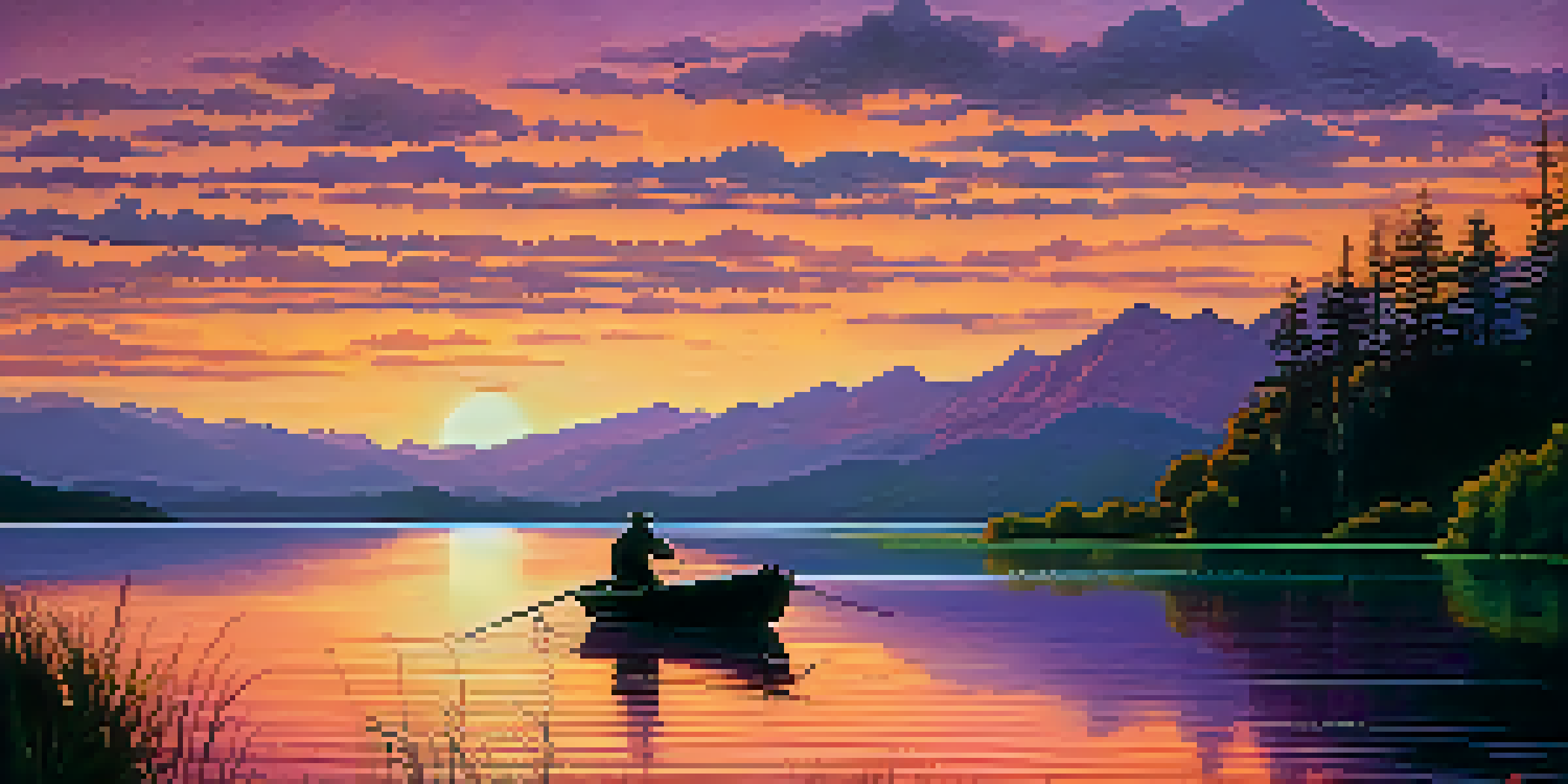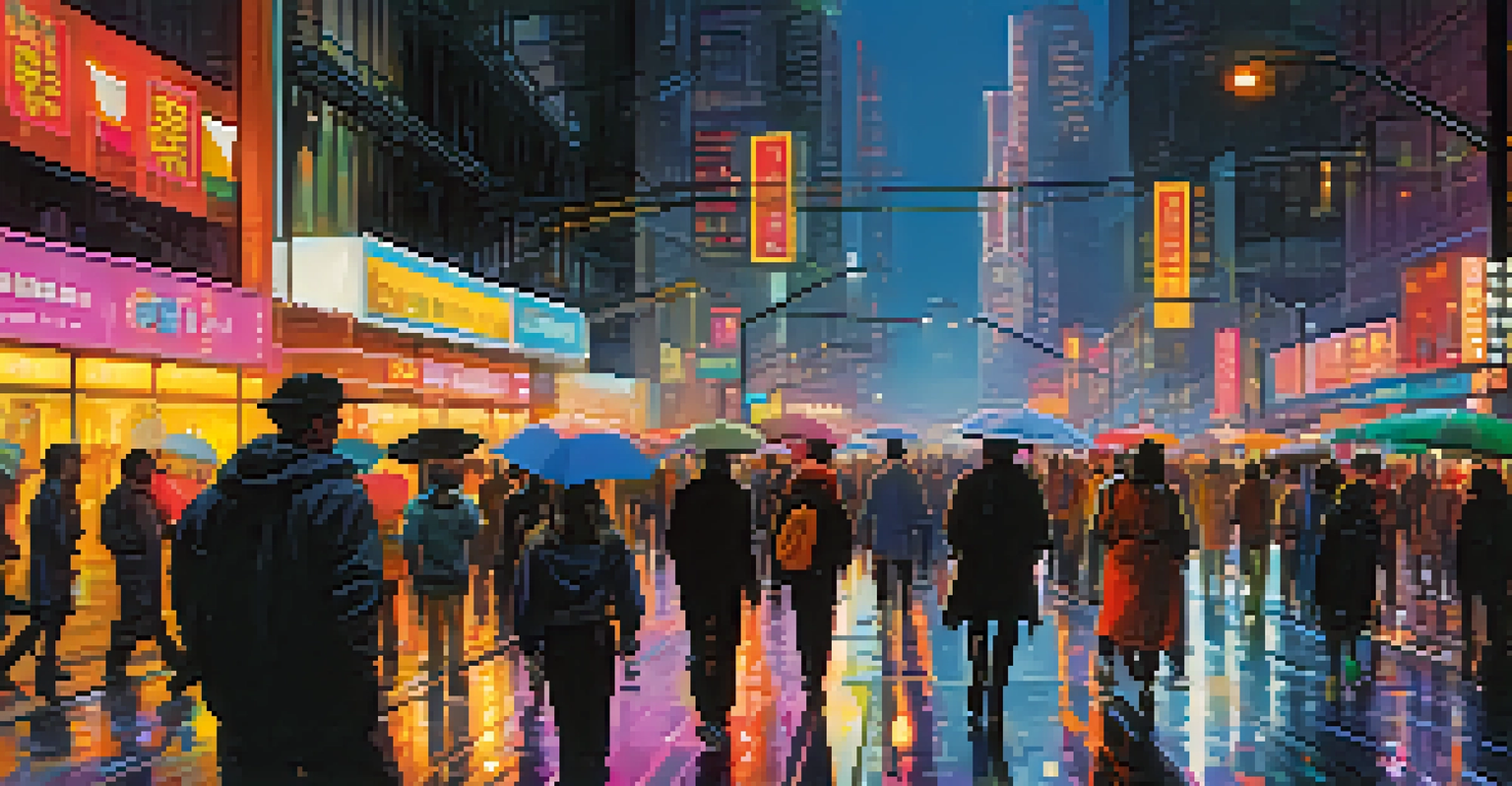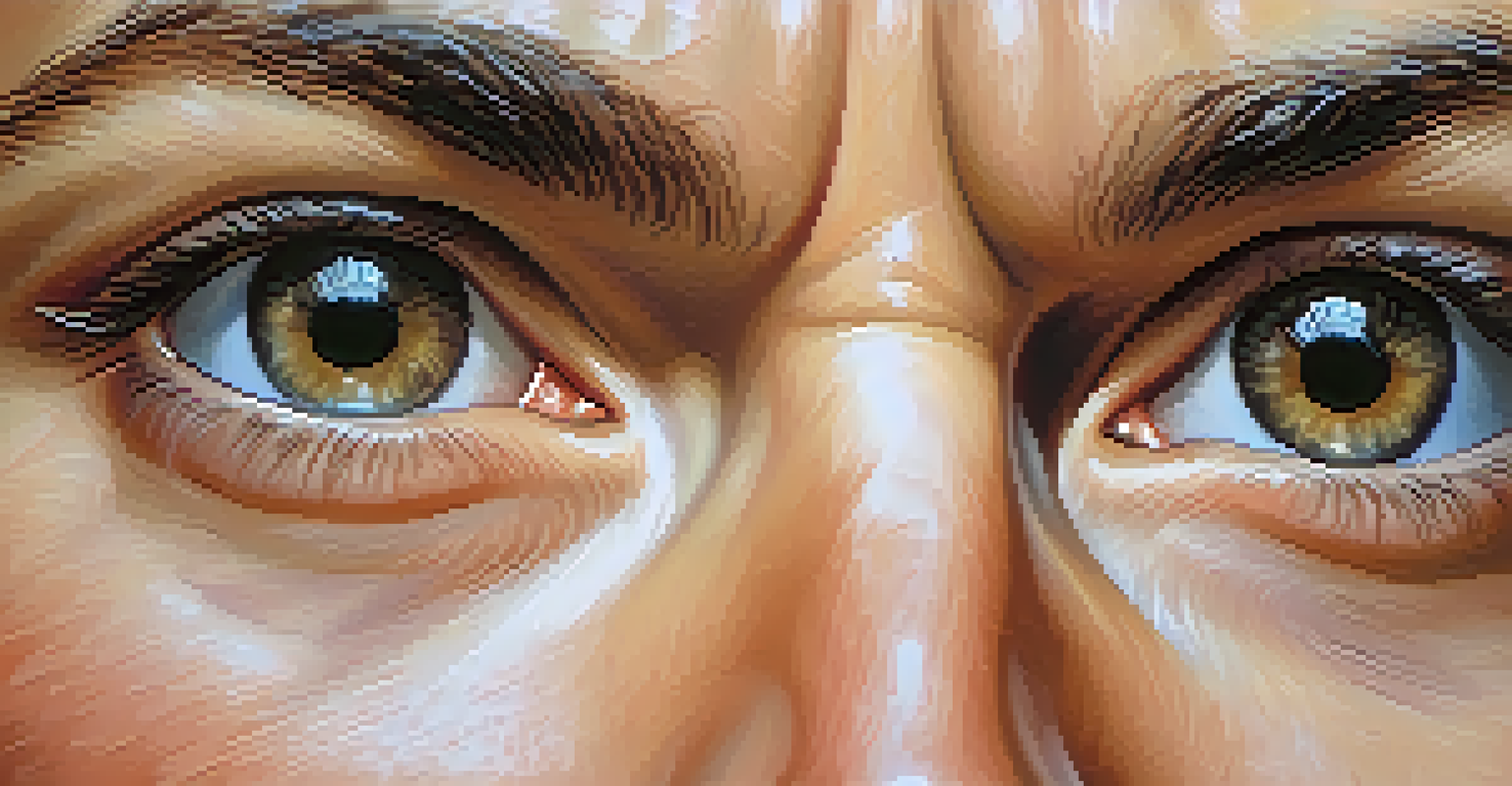The Role of Cinematography in Shaping Hollywood Narratives

Understanding Cinematography and Its Importance
Cinematography is the art of capturing visual images for film, encompassing everything from camera angles to lighting. It's not just about making things look pretty; it's a fundamental storytelling tool that can evoke emotion and set the mood. Think of it as the visual language of cinema, speaking to audiences without uttering a single word.
Cinematography is infinite in its possibilities... much more so than music or language.
When a director collaborates with a cinematographer, they create a visual narrative that complements the film's core themes. For example, a dark, moody color palette can emphasize tension in a thriller, while vibrant colors might be used to express joy in a romantic comedy. This visual approach influences how we perceive the story unfolding on screen.
Ultimately, cinematography shapes our understanding of the narrative by guiding our focus and influencing our emotional responses. This powerful combination of visuals and storytelling is what makes films resonate long after the credits roll.
The Evolution of Cinematography in Hollywood
Cinematography has undergone significant changes throughout Hollywood's history, evolving from silent films to the complex visuals we see today. In the early days, filmmakers relied heavily on natural light and simple camera techniques. However, as technology advanced, so did the ability to manipulate light, color, and movement, leading to more dynamic storytelling.

The introduction of color film in the 1930s was a game changer, allowing filmmakers to express emotions and themes visually. Movies like 'The Wizard of Oz' showcased how color could enhance storytelling, making scenes memorable and impactful. This shift marked the beginning of a new era where cinematography became an essential component of narrative construction.
Cinematography as Visual Storytelling
Cinematography is a fundamental storytelling tool that captures emotion and mood, shaping how audiences perceive a film.
Today, with tools like digital cameras and drones, cinematographers can create stunning visuals that push the boundaries of storytelling. This evolution highlights how advancements in technology continue to shape the way stories are told in Hollywood, reflecting societal changes and audience expectations.
Cinematography Techniques that Influence Narratives
Various cinematography techniques play a vital role in shaping narratives. For instance, the use of close-ups can create intimacy with characters, allowing the audience to connect emotionally. A well-timed close-up can convey a character's internal struggle, much like a painter focusing on a subject's eyes to reveal their soul.
The camera is a shortcut to a story, a way to capture the world and share it with others.
On the other hand, wide shots can establish context and environment, grounding the characters within their world. This technique is often employed to showcase the grandeur of a landscape or the chaos of a city, enhancing the narrative by providing visual context and scale. Think about how a sweeping shot of a battlefield can amplify the stakes of a war film.
Moreover, the choice of camera movement—like tracking shots or handheld techniques—can evoke different feelings in viewers. A steady tracking shot might create a sense of calm, while shaky handheld footage could heighten tension or urgency. These techniques are not just technical choices; they are integral to how narratives unfold on screen.
The Role of Lighting in Cinematic Storytelling
Lighting is one of the most crucial elements in cinematography, directly affecting mood and tone. The way a scene is lit can transform an ordinary moment into something dramatic or intimate. For example, low-key lighting can create suspense, while high-key lighting often suggests a cheerful or light-hearted atmosphere.
Consider how films like 'Blade Runner' use lighting to create a distinct atmosphere that reflects the film's dystopian themes. The interplay of shadows and neon lights not only sets the mood but also reinforces the narrative's underlying tension. In contrast, a romantic scene illuminated by soft, warm lighting can evoke feelings of love and comfort.
Techniques Enhance Narrative Depth
Techniques like camera angles, lighting, and color grading significantly influence the narrative by evoking emotions and guiding viewer focus.
Ultimately, effective lighting guides the viewer's emotional journey through the film, subtly influencing how we interpret the story. It's a powerful tool that, when used thoughtfully, enhances the overall impact of the narrative, making it more memorable and immersive.
Color Grading and Its Narrative Significance
Color grading is the post-production process of altering and enhancing the color of a film. This technique can significantly impact the story's mood and atmosphere. For instance, desaturated colors might evoke a sense of nostalgia or sadness, while vibrant hues can suggest energy and vitality.
Films like 'Mad Max: Fury Road' showcase how color grading can define a film's aesthetic and narrative tone. The stark contrast between the desolate desert landscape and the bold colors of the vehicles heightens the sense of chaos and urgency, drawing viewers deeper into the story. This careful manipulation of color creates a visual language that communicates themes and emotions.
By using color grading, filmmakers can also create visual motifs that reinforce the narrative. A recurring color palette can symbolize a character's emotional journey or thematic elements, making the story more cohesive. Thus, color grading is not just a technical choice; it's a narrative device that enriches the viewing experience.
The Impact of Camera Angles on Storytelling
Camera angles can profoundly influence how a story is perceived. Different angles can convey power dynamics, emotions, and perspectives. For instance, a low-angle shot can make a character appear dominant or heroic, while a high-angle shot can suggest vulnerability or defeat.
In films like 'The Godfather,' the strategic use of camera angles helps to establish character relationships and power hierarchies. The low-angle shots of Vito Corleone emphasize his authority, while higher angles used on other characters reflect their subordinate status. This visual storytelling deepens our understanding of the narrative and its complexities.
Genre-Specific Cinematic Styles
Each film genre employs unique cinematographic styles that enhance storytelling, from suspenseful horror to romantic comedies.
Moreover, unconventional angles, such as Dutch angles, can create a sense of disorientation or tension, enhancing the story's emotional impact. By manipulating camera angles, cinematographers can guide audiences through the narrative, shaping their perceptions and emotional responses.
Cinematography's Role in Genre-Specific Storytelling
Each film genre often has its unique cinematographic style that contributes to the narrative. For example, horror films frequently employ dim lighting and sudden camera movements to create suspense and fear. These techniques are designed to tap into viewers' primal fears, enhancing the narrative's gripping tension.
Conversely, romantic comedies typically use bright lighting and soft focus to create an inviting atmosphere, encouraging audiences to connect with the characters' journeys. The cinematography in such films enhances the storytelling by visually representing themes of love and connection.

Moreover, action films often rely on dynamic camera movements and quick cuts to convey excitement and intensity. This style keeps viewers on the edge of their seats, making them feel part of the fast-paced narrative. Thus, cinematography not only supports but also defines the storytelling approach within different genres.